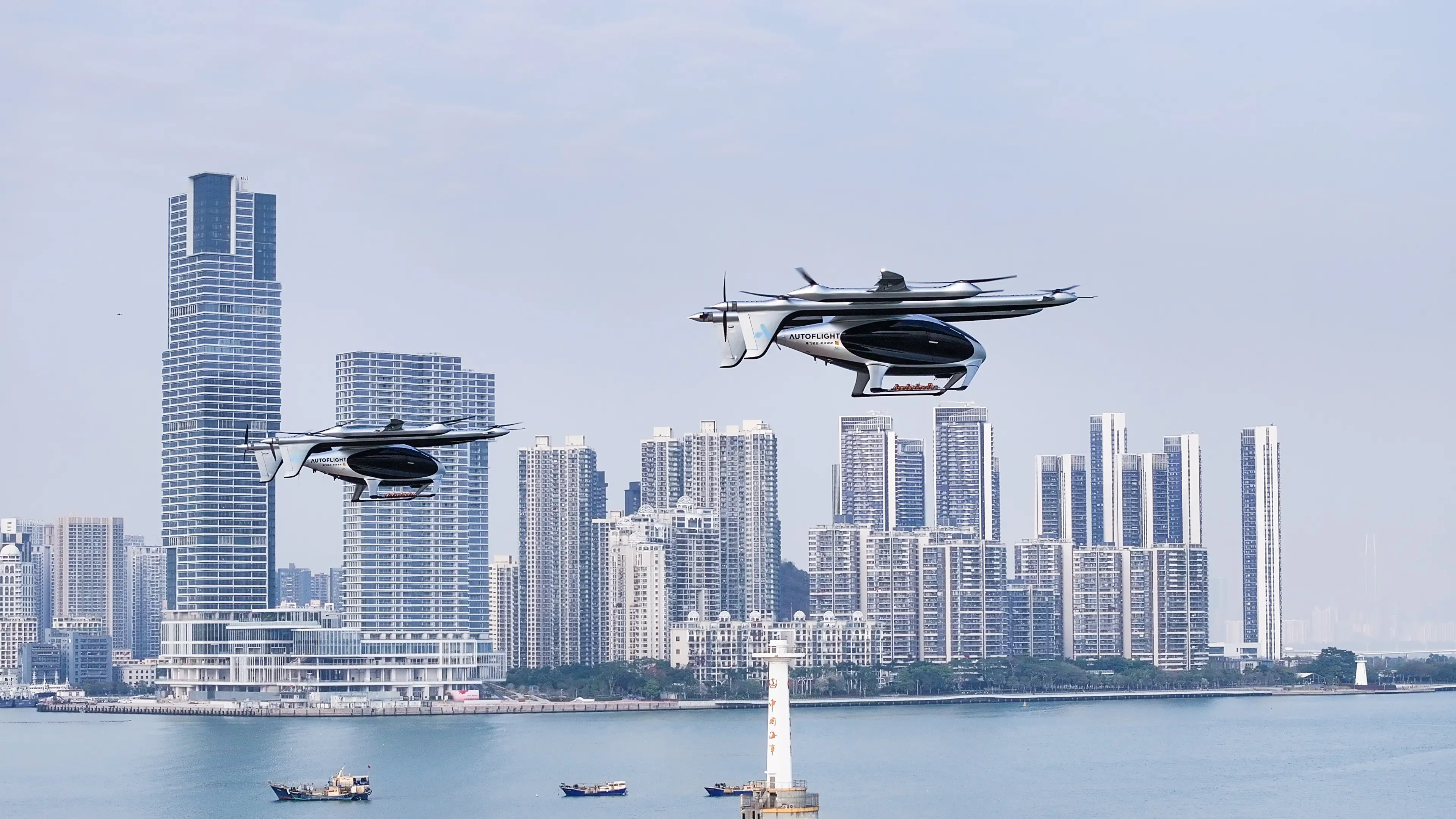
The Institute for Defense and Government Development (IDGA) is a research institution focused on the fields of defense, security, and government technology. The institute brings together experts and leaders from different fields to jointly explore and address challenges and issues related to defense and government technology, covering multiple aspects from cybersecurity, anti drone technology to military innovation, with the aim of promoting technological progress and policy-making to respond to constantly changing security threats. In 2024, the US Institute of Defense and Government Development released the "US Anti UAV Systems Market Report (2024-2029)", which analyzed the current development trends of anti UAV systems (C-UAS) equipment and technology in the United States, emphasizing the application of artificial intelligence and communication technology in anti UAV systems.
one
outline
In recent years, the widespread application of unmanned aerial vehicle systems (UAS) in military and commercial fields has brought new security challenges. The issues of unauthorized surveillance, privacy violations, airspace blockages, and the use of drones to carry destructive payloads are becoming increasingly prominent. The widespread use of unmanned aerial vehicle systems globally, especially in the Ukraine crisis, highlights the importance of anti drone systems. It is expected that by 2031, the global market for anti drone systems will grow fourfold, with a compound annual growth rate of 19% for the US market between 2024 and 2029. Countries are actively procuring anti drone systems, such as jamming, deception, and blinding systems, as well as laser based directed energy weapons, with integrated defense networks being more effective than isolated systems.
two
Classification of anti drone systems
At present, anti drone technology and systems are mainly divided into two categories: non kinetic and kinetic.
The non kinetic anti drone system covers multiple aspects. Firstly, the detection system utilizes sensor technologies such as radar, electro-optical/infrared cameras, acoustic sensors, and radio frequency detectors to detect and locate drones within a given airspace; Then, with the help of advanced algorithms and software, drones are identified and tracked based on features such as flight behavior, size, and communication signals to distinguish between authorized and illegal drones. In terms of defense measures, electronic countermeasures technology can disrupt or interfere with unmanned aerial vehicle control and communication systems. Among them, interference disrupts its communication and navigation radio frequencies by emitting electromagnetic signals; Deception refers to the generation of false signals that mislead unmanned aerial vehicle navigation systems; Acoustic deterrence uses high-frequency sound or acoustic signals to prevent drone intrusion; Non lethal options in directed energy weapons, such as laser dazzlers, can render unmanned aerial vehicle electronic devices or sensors ineffective; Command and control interrupt communication links to prevent instruction transmission; Cyber threat intelligence is used to predict and respond to cyber threats.
The kinetic energy anti drone system physically eliminates drone threats, including intercepting drones with equipped cannons, capture devices, etc., deploying kinetic energy projectile weapons to shoot down drones by targeting key components or causing physical damage, using directed energy weapons such as high-energy laser beams or microwave pulses to destroy drone electronic equipment, using explosive devices to directly destroy drones, equipping aircraft or ground platforms with collision avoidance systems to disrupt drone flight paths, using maneuvering and impact methods to crash drones, using specialized kinetic energy interceptors such as precision guided projectiles or missiles to destroy targets, deploying land-based air defense systems to strike drones, and installing remote weapon stations on remote operation platforms or vehicles to remotely eliminate threats.
These two types of technologies and systems work together from different perspectives to build a multi-level defense system against drone threats, playing an important role in maintaining airspace security and protecting critical infrastructure.
three
Analysis of the US Department of Defense's Anti UAV System Project
(1) Market value
According to predictions, the cumulative market value of the US Department of Defense's anti drone systems will reach $10.1 billion between 2024 and 2029. This growth is mainly due to the sustained demand for anti drone technology, as well as significant investments by the US Department of Defense in research and development and procurement.
(2) Main projects
The US Department of Defense has carried out numerous projects and invested significant resources in the field of anti drone systems. In terms of procurement, the US Army's small anti drone system project covers various types of anti drone systems, including fixed, semi fixed, vehicle mounted, portable, and handheld, for use in conflict scenarios and protecting critical defense facilities. The procurement includes electronic warfare (EW), command and control (C2), as well as kinetic and non kinetic weapon systems. It is expected that a large number of "coyote" interceptors, fixed launch systems, mobile launch systems, and Ku band radio frequency systems (KuRFS) will be procured by 2029. In addition, in the Mobile Short Range Air Defense System (M-SHORAD) Increment 2 project, the US Army procured advanced laser capabilities integrated into Stryker Combat Vehicles (SCVs) and Infantry Shift Vehicles (ISVs); In the Temporary Mobile Short Range Air Defense System (IM-SHORAD) anti drone system project, General Dynamics Land Systems (GDLS) of the United States has been awarded the contract to produce, test, and deliver the relevant systems; In the shipborne gun anti unmanned system project, the US Navy equips surface vessels with gun systems to possess anti surface and air defense combat capabilities; In the Army Multipurpose High Energy Laser (AMP-HEL) system project, BlueHalo has been awarded a contract to develop related laser weapon systems. In terms of research and development, the C-SUAS project focuses on developing innovative kinetic energy missile interceptors for small unmanned aerial vehicle systems; Development of a directed energy indirect fire protection capability (DE-IFPC) project to counter aerial threats system; The High Power Microwave (HPM) anti drone system prototype project focuses on developing an anti drone system based on high-power microwave technology.
four
Other federal agencies in the United States have anti drone systems
Project Analysis
(1) Market value
Between 2024 and 2029, the market for anti drone systems used by federal agencies other than the Department of Defense (such as the Department of Homeland Security, the Department of Energy, and the Department of Justice) in the United States is expected to be worth $490.3 million. Among them, the largest project includes the anti drone technology service support project operated by the Science and Technology Bureau of the Department of Homeland Security.
(2) Main projects
In addition to the Department of Defense, other federal agencies in the United States have also carried out numerous anti drone system projects with significant investment. The Science and Technology Agency of the US Department of Homeland Security has collaborated with multiple parties to develop and test innovative anti drone capabilities. It has signed a five-year contract worth $260 million with defense contractor Amentum to support the development of anti drone technology; In 2024, the US Customs and Border Protection's anti drone system program received $6.1 million in special funding for various purposes; The Federal Transportation Security Administration has been testing anti drone systems at multiple major airports since August 2022, and is expected to allocate approximately $71.4 million for the program from 2024 to 2029.
Artificial intelligence technology plays a key role in these projects, helping to improve system performance in target detection, tracking, threat assessment, and other areas. Through rapid analysis and processing of large amounts of data, the system can more accurately identify drones, quickly analyze battlefield situations, optimize decision-making, improve combat effectiveness, and demonstrate broad application prospects and enormous potential. It continuously empowers the development of anti drone systems, makes more breakthroughs in technological innovation and practical applications, and responds to increasingly complex drone threats to ensure the safety of military operations and important facilities.
five
Future prospects
(1) Technological development
Against the backdrop of the rapid rise of the drone industry and the expanding market size, federal agencies in the United States are continuously promoting the development of anti drone technology. On the one hand, we will continue to develop new anti drone technologies, covering areas such as laser weapons, high-power microwave systems, cyber warfare capabilities, as well as artificial intelligence and machine learning technologies. Among them, artificial intelligence technology plays an important role. Through the analysis and processing of massive data, it can optimize the aiming and striking accuracy of laser weapons and high-power microwave systems, enhance the detection and interference of drone communication effects, and continuously promote innovation and breakthroughs in these technologies. On the other hand, the construction of integrated defense networks has attracted much attention. In the future, anti drone systems will pay more attention to the integration of various detection and mitigation technologies, achieving information sharing, collaborative combat, and rapid response, effectively responding to complex and changing drone threats. Artificial intelligence technology empowers the system's information fusion and collaborative decision-making, enhancing overall defense effectiveness. Meanwhile, with the continuous advancement of technology, anti drone systems will develop towards miniaturization and portability, making them easier to deploy and operate, expanding the scope of use for military and civilian institutions, and better protecting critical infrastructure and personnel safety. The application of artificial intelligence technology can help optimize system design, achieve miniaturization while maintaining high performance. In addition, future anti drone systems will have higher levels of intelligence and automation, capable of automatically detecting, identifying, and tracking drones, and taking action when necessary, reducing human intervention and improving system response speed and accuracy. This is mainly due to the application of artificial intelligence technology in target recognition, behavior analysis, and autonomous decision-making. Through deep learning and real-time analysis of drone characteristics, it achieves fast and accurate automatic response, providing strong support for maintaining national security and ensuring the safety of important facilities.
(2) Market growth
In the military field, it is expected that the US Department of Defense will continue to increase its procurement and investment in anti drone systems in the coming years to meet military operations and base protection needs. With the continuous development and popularization of drone technology, the demand for anti drone technology in the military field will also continue to grow. Artificial intelligence technology plays a key role in this regard, enhancing military defense effectiveness by improving target recognition and threat assessment capabilities. The civilian sector is also showing a growing demand trend, especially in areas such as critical infrastructure protection, border security, and large-scale event security. With the widespread application of drones in civilian fields, the demand for anti drone technology in the civilian market is rapidly growing. AI enabled anti drone systems can achieve more accurate detection and more efficient response, effectively preventing drone threats. From a global market perspective, governments and enterprises around the world are increasingly valuing anti drone systems, and market demand continues to grow. It is expected that the global anti drone market will quadruple by 2031, which will bring huge development opportunities for related enterprises and research institutions.
(3) Expansion of application areas
In the current complex and ever-changing security situation, the application fields of anti drone systems are constantly expanding. Specifically, the role of anti drone systems in protecting critical infrastructure is becoming increasingly prominent, such as nuclear power plants, airports, ports, and other infrastructure that are crucial to national security and economic operations. Reliable anti drone technology can effectively prevent drone attacks and ensure their safe and stable operation; In the field of border security, with the increasing application of drones in cross-border crime and smuggling activities, the demand for anti drone systems by border security agencies continues to rise. By monitoring and intercepting illegal entry drones, national border security can be maintained; In terms of security for large-scale events, anti drone systems play an important role in preventing drone interference and attacks, ensuring the safety and smooth progress of activities; In addition, in the field of urban security, facing the increasing application of drones in cities, urban security agencies need anti drone systems to respond to potential drone threats, protect government buildings, commercial centers, and densely populated areas from drone attacks, and provide a safe and stable living environment for urban residents.
In summary, in the coming years, the anti drone market in the United States and even globally will continue to grow, technology will continue to advance, and application areas will continue to expand. Governments and businesses around the world will increase investment in the research and application of anti drone technology to address the growing threat of drones.




